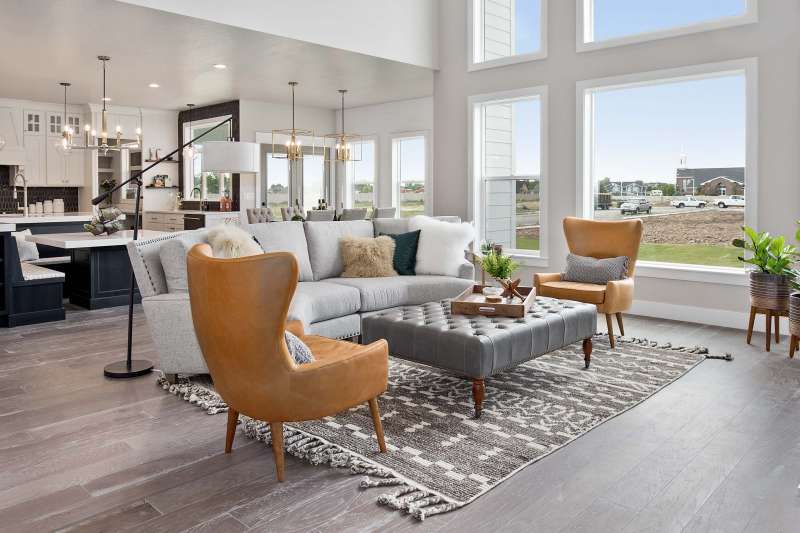Crafting a Stunning Home: Design and Staging Tips for Every Space
The design and staging of a home play a pivotal role in creating an inviting and aesthetically pleasing living environment. Whether preparing a home for sale or simply seeking to enhance daily living, the thoughtful arrangement of spaces can transform a house into a harmonious and visually appealing sanctuary. In this essay, we explore key design and staging tips that can elevate the ambiance of any home.
1. Understanding the Purpose of Each Space:
Effective home design begins with a clear understanding of the purpose and functionality of each space. Whether it’s a living room, bedroom, or kitchen, the design should align with the intended use of the space, creating a cohesive flow throughout the home.
2. Neutral Color Palette for Versatility:
A neutral color palette forms the foundation for timeless and versatile home design. While bold and vibrant colors have their place, neutrals such as whites, grays, and beiges provide a neutral backdrop that allows for easy incorporation of various styles and accent colors.
3. Maximizing Natural Light:
Natural light is a powerful design element that can enhance the overall atmosphere of a home. Optimize the use of windows and consider light and airy window treatments to allow sunlight to permeate the space. Mirrors strategically placed can also amplify the effect of natural light.
4. Decluttering for Visual Harmony:
A clutter-free environment contributes to a sense of visual harmony. Decluttering involves organizing and streamlining spaces, removing unnecessary items, and creating a clean and inviting atmosphere. This is especially crucial when staging a home for potential buyers.
5. Functional and Stylish Furniture:
The choice of furniture should balance both functionality and style. Consider the scale of the furniture in relation to the room, and opt for pieces that serve a purpose while contributing to the overall design aesthetic. Multifunctional furniture can be particularly valuable in smaller spaces.
6. Creating Focal Points:
Each room should have a focal point that draws attention and anchors the design. This could be a fireplace, a piece of artwork, or a statement piece of furniture. Focal points add visual interest and guide the viewer’s gaze through the space.
7. Accessorizing with Intention:
Thoughtful accessorizing can enhance the character of a home. Choose accessories that reflect your personal style and contribute to the overall theme of each room. This could include throw pillows, rugs, artwork, and decorative items that create a cohesive and inviting ambiance.
8. Symmetry and Balance:
Achieving a sense of symmetry and balance in design is visually pleasing. This can be accomplished through the strategic placement of furniture, artwork, and decor elements. Symmetry creates a sense of order and harmony that resonates with occupants and visitors alike.
9. Bringing Nature Indoors:
Incorporating natural elements into home design adds a touch of tranquility and connects the interior with the outdoors. Indoor plants, natural materials like wood and stone, and nature-inspired color palettes contribute to a soothing and organic atmosphere.
10. Staging for Selling Success:
When staging a home for sale, depersonalization is key. Remove personal items and create a neutral, welcoming space that allows potential buyers to envision themselves living in the home. Highlight the home’s strengths and unique features to make a lasting impression.
11. Curating Cozy and Inviting Spaces:
The essence of home design is to create spaces that feel warm and inviting. Incorporate cozy elements such as plush throws, comfortable seating, and soft lighting to encourage a sense of comfort and relaxation.
12. Adapting Design Trends to Personal Style:
While staying informed about design trends can be inspiring, it’s essential to adapt them to your personal style. Incorporate trends that resonate with your preferences, creating a home that reflects your individual taste and personality.
Conclusion: A Harmonious Haven
In conclusion, the art of home design and staging is a creative journey that transforms living spaces into harmonious havens.
By understanding the purpose of each space, embracing a neutral palette, maximizing natural light, and incorporating intentional design elements, a home becomes a reflection of both style and functionality.
Whether preparing a home for sale or simply seeking to enhance daily living, the fusion of thoughtful design and strategic staging creates an environment that captivates the senses and provides a sanctuary for those who call it home.
